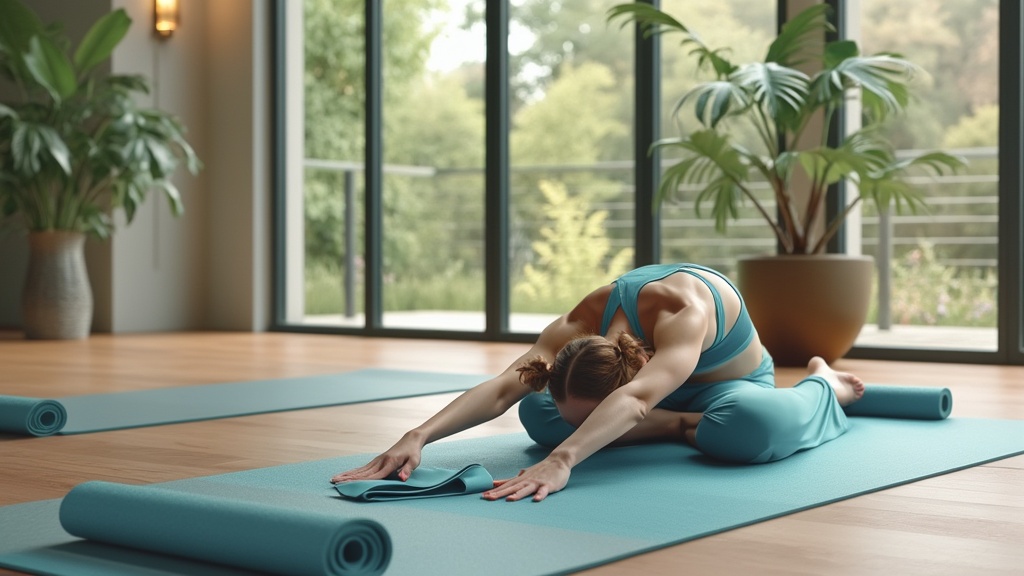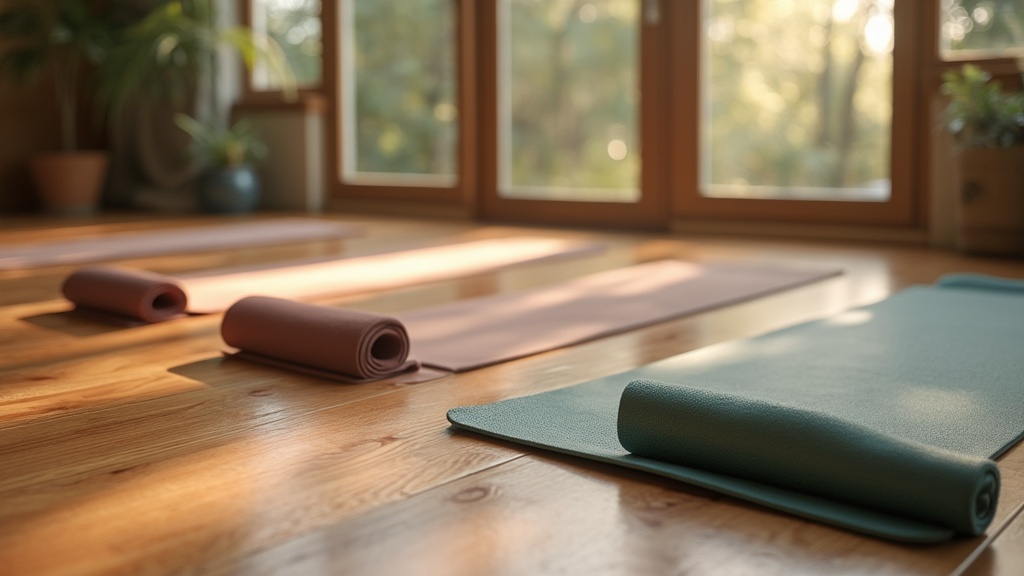
Incorporating targeted exercises for range of motion significantly enhances flexibility, enabling better performance in daily activities and sports. Specifically, improving joint mobility requires consistent engagement in stretching techniques designed to increase elasticity and reduce muscle tension.
Regular practice of these exercises fosters blood flow, which is essential for joint health.
A comprehensive approach to flexibility includes dynamic stretching, which warms up major muscle groups before exertion, and static stretching, beneficial during cooldowns to maintain long-term flexibility gains.
Engaging in these exercises not only aids in injury prevention but also promotes overall physical well-being and functional movement.
Flexibility’s Role In Range Of Motion
Flexibility is fundamentally the ability of joints to move through their full range of motion. Enhanced flexibility plays a significant role in athletic performance, as it can lead to improved muscle coordination and injury prevention.
Incorporating a simple daily stretching routine for beginners can significantly enhance joint stability and overall mobility. Specific stretches targeting the hamstrings, quadriceps, and shoulders can be easily incorporated into any fitness program.
Engaging in these stretches not only improves posture but also reduces the risk of tension-related pain, benefiting individuals across various age groups and fitness levels.
Daily Stretching Routine for Beginners
Begin by incorporating these basic stretches:.
- Hamstring Stretch: Hold for 20-30 seconds.
- Quadriceps Stretch: Maintain balance while stretching, hold for 20-30 seconds.
- Shoulder Stretch: Stretch each arm across the body, hold for 20-30 seconds.
Integrating these exercises into a daily regimen can lead to noticeable improvements in mobility and flexibility, ultimately enhancing overall health and athletic performance.

How Does Mobility Impact Daily Life
Mobility significantly influences overall quality of life, affecting various daily activities and interactions. When mobility is limited, individuals frequently encounter challenges such as social isolation, increased dependence on caregivers, and diminished mental health.
Maintaining mobility as we age is essential for preserving independence, enabling individuals to perform essential tasks and engage with their communities.
Practical mobility exercises can be seamlessly integrated into daily routines at home.
For example, chair yoga enhances flexibility and strength, while heel-to-toe walks improve balance. Simple activities like leg swings can notably increase hip mobility, promoting better overall health and well-being.
The Importance of Mobility in Aging
As individuals age, mobility becomes increasingly important for maintaining independence and functionality.
Regular physical activity helps prevent the decline of muscle strength and joint flexibility, which are critical for daily living. Engaging in mobility exercises not only fosters physical health but also improves mental acuity and emotional resilience.
Effective Stretching Techniques For Pain Relief
Stretching serves a pivotal role in injury prevention and maintaining flexibility.
Implementing static stretching after workouts enhances muscle recovery and promotes elasticity.
Alternately, utilizing dynamic stretching before physical activities efficiently warms up muscles, thereby minimizing the risk of injury.
Other methods, such as foam rolling, can alleviate muscle tension, improving blood flow and overall mobility.
Different Stretching Methods
- Static Stretching: Best performed after workouts to enhance recovery.
- Dynamic Stretching: Ideal as a warm-up to prepare the body for activity.
- Foam Rolling: Effective for relieving muscle tightness and improving circulation.
To maximize effectiveness, incorporate stretching both before and after your exercises.
This comprehensive approach to stretching not only aids in pain relief but also contributes to overall joint stability and performance enhancement in physical activity.
Mobility and Stretching
- Studies show that regular mobility exercises can reduce the risk of falls by improving balance and strength.
- Research indicates that maintaining mobility in older adults is linked to a lower incidence of depression and anxiety.
- Static stretching post-exercise can enhance muscle recovery by up to 30%, according to sports medicine studies.
- Dynamic stretching before activities has been shown to increase performance and reduce injury rates in athletes.
Benefits Of Joint Mobilization Exercises
Joint mobilization exercises significantly enhance overall movement quality, impacting various physical activities throughout daily life. These targeted movements effectively reduce stiffness in joints, which ultimately improves function.
By prioritizing mobility, individuals can experience a better range of motion during numerous tasks.
For example, a basic ankle mobilization exercise involves standing near a wall for support.
Place one foot forward, bending the knee toward the wall while keeping the heel grounded. This simple exercise promotes blood flow and joint flexibility, serving as an effective warmup.
Regular engagement in these exercises can prevent future movement limitations and discomfort.
Strengthening Major Muscle Groups For Better Performance
Balanced muscle strength directly influences enhanced flexibility and overall athletic performance. Engaging in strength training not only improves physical capabilities but also contributes to injury prevention by addressing muscle imbalances.
Incorporating foundational exercises, such as squats, is essential for developing major muscle groups.
To perform a squat, stand with feet shoulder-width apart and lower your body by bending your knees while maintaining an upright chest.
This exercise enhances core stability and promotes proper alignment in functional movements. Consequently, effective strength training routines lead to improved flexibility, functional movement, and enhanced athletic capabilities.
Joint Mobilization and Strength Training
- Joint mobilization exercises can improve flexibility by increasing the range of motion in joints.
- Regular strength training can reduce the risk of injuries by correcting muscle imbalances.
- Engaging in foundational exercises like squats enhances core stability and functional movement.
- Improved blood flow from mobility exercises can aid in recovery and overall joint health.
Exploring Rehab Exercises For Injury Prevention
Engaging in rehabilitation exercises serves as a cornerstone for maintaining overall wellness and preventing injuries. These exercises enhance joint mobility and significantly improve muscle strength, thus reducing the likelihood of future injuries.
Incorporating a simple ankle mobility drill into your daily routine can effectively aid recovery.
To perform this exercise, stand near a wall for support, keep your heel grounded, and push your knee forward over your toes.
Hold briefly and return to the starting position. This movement enhances flexibility and prepares your body for physical challenges.
The Importance of Joint Mobility
Joint mobility is essential for optimal physical function.
Improved joint mobility contributes to enhanced functional movement and may prevent common injuries. Incorporating mobility exercises can lead to a comprehensive approach to rehab and overall physical health.
The Role Of Dynamic Stretching In Warmups
Dynamic stretching plays a significant role in preparing the body for physical activity.
This method enhances blood flow to muscles while improving flexibility and range of motion.
A highly effective dynamic stretch is the walking lunge, which increases muscle engagement and prepares muscles for the demands of exercise.
To perform this stretch, step forward into a lunge position, ensuring your front knee does not exceed your toes. Alternate legs as you move forward, allowing your body to warm up and adapt.
This practice minimizes the risk of injuries during workouts.
Benefits of Dynamic Stretching
- Enhances blood circulation: Dynamic stretching increases blood flow to major muscle groups, ensuring they are ready for activity.
- Improves flexibility: Regular dynamic stretching sessions can lead to improved flexibility and greater range of motion.
- Increases neuromuscular coordination: Engaging in these stretches activates motor skills, which are essential for athletic performance.
| Aspect | Importance |
|---|---|
| Joint Mobility | Essential for optimal physical function and injury prevention. |
| Dynamic Stretching | Enhances blood flow, flexibility, and range of motion. |
| Walking Lunge | Prepares muscles for exercise and minimizes injury risk. |
| Neuromuscular Coordination | Improves motor skills essential for athletic performance. |
Incorporating Yoga For Enhanced Flexibility
Yoga serves as an effective method to improve physical flexibility while simultaneously promoting mental well-being. Through consistent practice, yoga enhances muscle elasticity and joint mobility, both of which are crucial for injury prevention and optimal athletic performance.
The integration of deep breathing techniques and mindful movement fosters mental clarity, which can enhance overall fitness routines.
The Benefits of Yoga for Flexibility
Research indicates that yoga significantly contributes to improved mobility and flexibility within the body.
Here are some key benefits:.
- Improved Range of Motion: Yoga poses can enhance the range of motion in joints.
- Tension Relief: Regular practice offers effective tension relief, aiding in pain management.
- Enhanced Circulation: Yoga promotes better blood flow, which supports recovery.
Beginner-Friendly Yoga Pose for Flexibility
One effective pose for beginners is the Downward Dog. This pose stretches the entire body, targeting major muscle groups such as the hamstrings and spine. When executed correctly, it enhances core stability and improves both shoulder flexibility and hip mobility.
Incorporating the Downward Dog into a daily routine can lead to significant improvements in flexibility and overall physical health.
By integrating dynamic stretching with yoga, practitioners can create a well-rounded approach to fitness. This combination promotes both physical and mental wellness, ensuring longevity in one’s fitness journey. Engaging in yoga allows individuals to embrace a variety of practices that cater to their individual capabilities, thereby enhancing their overall quality of life.
| Benefit | Description |
|---|---|
| Improved Range of Motion | Yoga poses enhance the range of motion in joints. |
| Tension Relief | Regular practice offers effective tension relief, aiding in pain management. |
| Enhanced Circulation | Yoga promotes better blood flow, which supports recovery. |
| Core Stability | Downward Dog enhances core stability and improves shoulder flexibility. |
